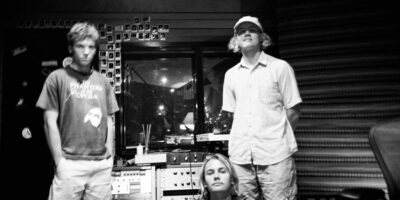Reviewed on Tuesday January 24
A solo piano performance in the relative intimacy of Sydney Opera House’s Concert Hall is always going to be a source of some excitement, especially when it’s that of French composer and musician Yann Tiersen. 20-odd years into a storied career, his most recent solo album Eusa presented fragile piano compositions thematically and musically centered on his home of Ushant, a barely inhabited island off Brittany on France’s western coast. And it was to this windswept setting that we would return throughout the show.
Simply dressed in tee and jeans, Tiersen entered with orange lanterns lightly bathing his minimal mise en scène of instruments. The disarming warmth of a simple “good evening” was to start the show, and a vintage reel-to-reel recorder to be his only accompaniment for the evening.
Perhaps coloured in part by his Amélie and Good Bye Lenin! film scores being firmly etched into the popular conscience, there was a characteristically cinematic quality to Tiersen’s performance. Throughout the evening, he drifted between piano, violin and the nostalgic, toy-piano-like tinkle and tonk of two compact harpsichords. Despite missing the multi-layered instrumental interplay of much of his recorded work, this drifting came to resemble its own series of sound tracks and musical portraits, a fitting showcase of Tiersen’s Romantic bent and ear for melody.
Over the course of a long and varied career, Tiersen has refined an admirable quality in making a melody seem familiar, a quality that revealed itself quite beautifully in the Concert Hall. Pensive and poignant, his performance evoked feelings of seasonal change, of the time between seasons – whether in the jagged motif of Amélie’s ‘Sur Le Fil’ and its deranged violin arpeggio and tremolo, bow drawn steady before the storm; or as in the twinkling trickle and tremble of recent piano composition ‘Porz Goret’, in which we imagined ourselves perched on the craggy headland of his beloved Ushant island, softly rebuffed by the coastal winds of the Celtic Sea.
Underscored by the soft background drone of field recordings that filled the aural space between, much was in the lightness of Tiersen’s touch; fingers that gently glided and casually rested over keys and string, persistently pulling and tugging at emotion, yet never prone to bloated melodrama. So much so that, laconic thank yous aside, his limited engagement with the audience was barely noticeable.
Returning to the stage for the latter of two short encores, Tiersen struck a slightly sheepish figure. It only served to highlight his casual charm, with rapturous applause suggesting others were just as wooed.

































